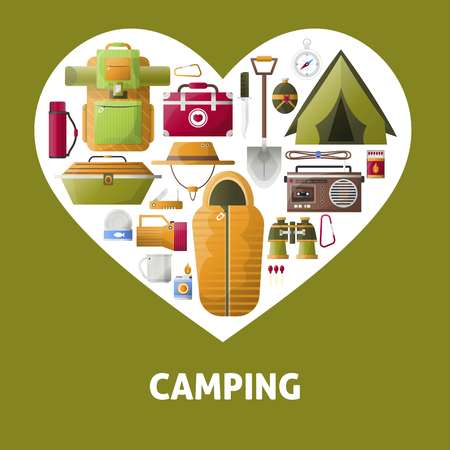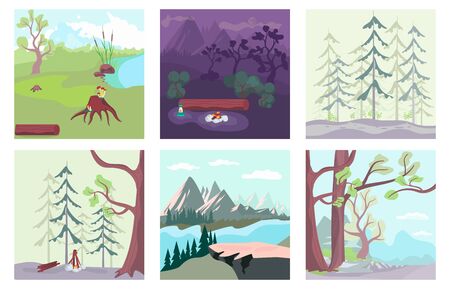1. Understanding What Makes a Trail Beginner-Friendly
When you’re just starting out with hiking in the United States, picking the right trail can make all the difference between a fun adventure and a tough challenge. Beginner-friendly trails have certain features that help new hikers feel comfortable, safe, and inspired to keep exploring.
Key Characteristics of Easy Hiking Trails
| Feature | Why It Matters | What to Look For |
|---|---|---|
| Manageable Elevation Gain | Less steep climbs mean less strain and easier breathing for beginners. | Look for trails with under 500 feet of elevation gain per mile. |
| Well-Marked Paths | Clear signs and blazes help prevent getting lost, even if you’re new to trail navigation. | Choose trails maintained by local parks or national forests with good signage. |
| Accessible Locations | Easy-to-reach trailheads reduce travel time and stress for first-time hikers. | Trails near cities, state parks, or popular recreation areas often have better access. |
| Smooth Terrain | Fewer rocks and roots make walking easier and safer for those not used to rough ground. | Check reviews or park websites for details about trail surfaces. |
| Adequate Facilities | Amenities like restrooms, water fountains, and parking make your hike more comfortable. | Parks or established recreation areas usually offer these basics. |
The American Approach to Beginner Trails
In the U.S., beginner trails often combine natural beauty with convenience. Many state and national parks design “nature walks” or “loop trails” specifically for new hikers. These might include interpretive signs about local wildlife or history, benches for resting, and even picnic spots along the way. American hiking culture values inclusivity—so don’t hesitate to start small! Remember, there’s no shame in choosing an easy path as you build your skills and confidence on the trail.
2. Researching and Locating Trails Near You
Using Local Resources to Discover Beginner Hiking Trails
If you’re new to hiking in America, finding the right trail can feel overwhelming. The good news is, there are plenty of local resources that make it easy to get started. Your city or county parks department website often lists nearby trails and rates their difficulty. Local outdoor gear stores—like REI or smaller shops—are great places to ask for beginner trail suggestions, and many even offer free maps or host group hikes for newcomers. Libraries may have guidebooks specific to your region, and local tourism offices often provide brochures about popular natural spots.
Apps and Websites for Trail Discovery
Technology makes it even easier to find the perfect beginner trail. Apps like AllTrails, Hiking Project, and Gaia GPS let you search for trails near your location, filter by difficulty level, read reviews from other hikers, and see photos of the terrain. These platforms also offer up-to-date information on trail conditions, closures, or seasonal highlights.
Popular Trail Apps & Their Features
| App/Website | Key Features | Best For |
|---|---|---|
| AllTrails | User reviews, difficulty ratings, GPS tracking | All skill levels; nationwide coverage |
| Hiking Project | Detailed maps, community tips, photos | Planning new hikes; learning about local trails |
| Gaia GPS | Offline maps, route planning tools | Exploring areas with limited cell service |
Tapping Into Community Recommendations
Your local hiking community is one of the best resources for finding beginner-friendly trails. Join regional Facebook groups or check out Reddit forums like r/hiking or state-specific subreddits. People love sharing their favorite spots and are usually happy to give advice tailored to your experience level. Many U.S. towns also have Meetup.com groups dedicated to hiking that welcome beginners with guided outings.
Regional Differences Across America
The United States has incredibly diverse landscapes—from the flat Midwest prairies to the steep Rocky Mountains or lush East Coast forests. What’s considered an “easy” hike in Colorado might be very different from one in Florida. Always check elevation gain and surface type (rocky, sandy, muddy) in addition to distance. Here’s a quick look at what you might expect in different regions:
| Region | Typical Terrain | Beginner Trail Tip |
|---|---|---|
| Northeast (e.g., New York, Vermont) | Wooded hills, moderate elevation changes, roots/rocks on path | Look for well-maintained state park trails with gentle grades |
| Southeast (e.g., Georgia, North Carolina) | Lush forests, rolling hills, occasional creek crossings | Choose nature preserves or greenways for easier walks |
| Midwest (e.g., Illinois, Minnesota) | Prairies, woodlands, mostly flat terrain with some lakeside paths | Paved or gravel multi-use trails are great for first-timers |
| West (e.g., Colorado, California) | Mountainous areas, desert landscapes, higher elevation gains possible | Select foothill trails or urban open spaces before tackling mountains |
| Pacific Northwest (e.g., Washington, Oregon) | Mossy forests, waterfalls, moderate slopes with potential for mud | Start on popular waterfall loops or coastal trails with clear signage |
| Southwest (e.g., Arizona, New Mexico) | Desert terrain, rocky paths, exposed sun and little shade | Pick short nature trails in city parks; bring extra water and sun protection |
Your First Steps: Start Close to Home and Stay Curious
The best way to build confidence as a new hiker is to start with simple trails near your home. Explore local parks on weekends and don’t hesitate to reach out to others for recommendations. Every region has its own unique beauty—and plenty of options for those just starting out!

3. Considering Safety and Accessibility Features
When youre new to hiking, safety and accessibility are key factors in choosing the perfect trail. Exploring America’s great outdoors should be fun and worry-free, so it’s important to look for beginner-friendly trails that go the extra mile to keep you comfortable and safe.
Trail Safety Measures
Before heading out, check if the trail has basic safety features in place. Well-maintained paths, sturdy bridges over streams, and barriers near steep drops all help prevent accidents. You can usually find this info on park websites or by reading recent trail reviews from other hikers.
Trail Maintenance
Choose trails that are regularly maintained. Trails with clear pathways, trimmed vegetation, and no major obstacles make hiking much easier for beginners. A well-kept trail not only looks nicer but also reduces your chances of tripping or getting lost.
Clear Signage
Look for trails with signs at key points—like trailheads, forks, or major landmarks. Good signage helps you stay on track, know how far you’ve gone, and figure out how much longer you have to hike. This is especially helpful if you’re just starting out and still learning to read maps or use hiking apps.
Accessibility Features
A great beginner trail should also be easy to access before you even start hiking. Here’s a simple breakdown of what to look for:
| Feature | Why It Matters |
|---|---|
| Parking Lots | Makes it easy to get in and out without a long walk before your hike begins. |
| Restrooms | Having bathrooms nearby means more comfort and peace of mind, especially for families. |
| Benches & Shelters | Let you rest when needed and provide shade or cover during sudden weather changes. |
| Trailhead Maps | Help you plan your route, estimate time, and check for emergency exits or contact info. |
Pro Tip: Look for ADA-Accessible Trails
If you’re hiking with kids, seniors, or anyone with mobility concerns, search for trails labeled as “ADA accessible.” These paths are designed to be smooth and wide enough for wheelchairs or strollers, making them perfect for all abilities.
4. Evaluating Trail Reviews and Difficulty Ratings
Understanding Trail Ratings
When searching for beginner-friendly hiking trails in the United States, it’s important to know how to interpret trail ratings. Most popular hiking websites and park services use a rating system to indicate how challenging a trail is. Here’s a simple guide:
| Rating | What It Means | Good for Beginners? |
|---|---|---|
| Easy | Flat or gently sloping, well-marked, short distance (often under 3 miles) | Yes |
| Moderate | Some elevation gain, might have uneven terrain, longer distance (3-6 miles) | Maybe (if you’re comfortable with some challenge) |
| Difficult/Hard | Steep climbs, rocky paths, long distance (6+ miles), may require experience | No |
Reading User Reviews Like a Pro
User reviews can give you real-life insight into what to expect on the trail. Look for comments about:
- Trail condition: Is it muddy, rocky, or overgrown?
- Crowds: Is it usually busy or quiet?
- Scenery: Are there good views or interesting features?
- Amenities: Are there restrooms or water fountains at the trailhead?
- Wildlife: Any reports of animals you should be aware of?
Avoid trails with frequent reports of confusing signage or poor maintenance if you’re just starting out.
Official Park Information Matters Too
The National Park Service (NPS) and local park authorities often provide up-to-date info about their trails. Check their official websites for:
- Trail closures or alerts
- Detailed maps and descriptions
- Safety guidelines and tips for beginners
- Accessibility information (wheelchair/stroller friendly)
Your Quick Checklist Before You Go:
- Double-check the trail’s current status online.
- Compare several user reviews for consistency.
- Choose trails rated “Easy” until you build confidence.
- If possible, start with trails in well-known national or state parks.
This approach will help you confidently select safe and enjoyable beginner hikes anywhere in America.
5. Planning Your First Hike: Gear, Weather, and Trail Etiquette
What to Pack for Your First Hike
Packing smart can make your hike much safer and more enjoyable. Here’s a quick guide to the essentials every beginner hiker in America should bring:
| Item | Why You Need It |
|---|---|
| Water Bottle or Hydration Pack | Staying hydrated is crucial, especially on longer trails. |
| Trail Snacks | Energy bars, nuts, or fruit keep your energy up. |
| Map or GPS App | Don’t rely only on phone signal; have a backup map. |
| First Aid Kit | Cuts and scrapes are common—be prepared. |
| Sunscreen & Bug Spray | Sunburn and bug bites can spoil your adventure. |
| Lightweight Rain Jacket | Weather can change quickly, even on sunny days. |
| Comfortable Hiking Shoes | Avoid blisters with proper footwear designed for trails. |
| Hat & Sunglasses | Protect your eyes and face from the sun. |
| Cell Phone (charged) | For emergencies, but don’t count on service everywhere. |
Dressing for Local Weather Conditions
The weather across America can vary greatly depending on where you hike. Always check the local forecast before heading out. Here are some general tips:
If You’re Hiking in Warmer Climates (like California or Arizona):
- Wear moisture-wicking clothing to stay cool.
- Choose light colors to reflect sunlight.
- Packing extra water is a must!
If You’re Hiking in Cooler or Mountain Areas (like Colorado or Washington):
- Dress in layers so you can adjust as temperatures change.
- A windbreaker or rain jacket helps with sudden storms.
- Bring gloves and a beanie if it might get cold—even in summer!
Essential Hiking Etiquette in America
American hikers follow some basic etiquette rules to keep trails safe and enjoyable for everyone:
- Leave No Trace: Pack out everything you bring in. Don’t leave trash behind.
- Yield the Trail: Step aside for uphill hikers and let faster groups pass safely.
- No Loud Music: Use headphones if you want music—don’t disturb others’ nature experience.
- Respect Wildlife: Observe animals from a distance; don’t feed them or approach them closely.
- Stay on Marked Trails: Protect plants and avoid getting lost by sticking to official paths.
- If Bringing Pets: Keep dogs leashed unless signs say otherwise, and always pick up after them.
The right gear, awareness of the weather, and good manners on the trail will help you enjoy your first American hiking adventure with confidence!


